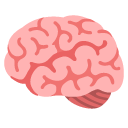For past videos that expose violent, abusive and controlling behavior from Israel see here and here.
Exposing Intelligence Agency Human Rights Abuses, Government and Corporate Corruption Along with the Problems of Zionism. The Foundation of Freedom is Freedom of Thought and Freedom of Speech
Tuesday, February 8, 2022
Thursday, January 13, 2022
Yuval Harari Total Biometric Surveillance Under The Skin
Yuval Harari is an advisor to Klaus Schwab of the World Economic Forum. Klaus Schwab is the author of the "Great Reset," a book that was published just after the Covid-19 epidemic. The other book he has written is "the Fourth Industrial Revolution" which is about the "internet of things" or how everything will be hooked up to the internet, including us.
Yuval Harari is the author of Sapiens: a Brief History of Humankind, Homo Deus: a Brief History of Tomorrow, and 21 Lessons for the 21st Century.
Friday, January 7, 2022
Tuesday, January 4, 2022
Talk About Mind Reading Technology
 The co-founders of the Center for Humane Technology discuss the dark side of AI and the risks it poses to humanity.
6:31:
The co-founders of the Center for Humane Technology discuss the dark side of AI and the risks it poses to humanity.
6:31:  The video discusses the impact of social media and AI on society and the need for responsibility and coordination to prevent negative consequences.
12:21:
The video discusses the impact of social media and AI on society and the need for responsibility and coordination to prevent negative consequences.
12:21:  AI has become entangled with society and it is important to address the potential risks and challenges it poses.
17:56:
AI has become entangled with society and it is important to address the potential risks and challenges it poses.
17:56:  Advancements in AI technology allow for the reconstruction of images from brain patterns, decoding inner monologues, and tracking human movement using Wi-Fi signals.
23:22:
Advancements in AI technology allow for the reconstruction of images from brain patterns, decoding inner monologues, and tracking human movement using Wi-Fi signals.
23:22:  AI technology is rapidly advancing and has the potential to manipulate language, create virtual avatars, and influence human behavior.
28:31:
AI technology is rapidly advancing and has the potential to manipulate language, create virtual avatars, and influence human behavior.
28:31:  The video highlights the rapid advancement and potential risks of AI language models, such as GPT-3, including their increasing theory of mind capabilities, ability to generate dangerous knowledge, and the ability to make themselves stronger through self-training.
34:22:
The video highlights the rapid advancement and potential risks of AI language models, such as GPT-3, including their increasing theory of mind capabilities, ability to generate dangerous knowledge, and the ability to make themselves stronger through self-training.
34:22:  AI is a recursive flywheel that improves itself, makes better chips, and optimizes supply chains.
39:31:
AI is a recursive flywheel that improves itself, makes better chips, and optimizes supply chains.
39:31:  The video discusses the potential harms and risks associated with the rapid deployment of AI technologies, focusing on the dangers of AI chatbots and the lack of legal protections in place.
44:58:
The video discusses the potential harms and risks associated with the rapid deployment of AI technologies, focusing on the dangers of AI chatbots and the lack of legal protections in place.
44:58:  The rapid deployment of AI language models without adequate safety measures poses significant risks to users, especially children.
49:33:
The rapid deployment of AI language models without adequate safety measures poses significant risks to users, especially children.
49:33:  The video discusses the need for humanity to address the challenges of climate change and technological advancements with wisdom and awareness.
55:03:
The video discusses the need for humanity to address the challenges of climate change and technological advancements with wisdom and awareness.
55:03:  The speaker discusses the potential future impact of AI on society and the need for collective intelligence to navigate the challenges it presents.
1:00:33:
The speaker discusses the potential future impact of AI on society and the need for collective intelligence to navigate the challenges it presents.
1:00:33:  The video discusses the need for upgraded institutions and global coordination to ensure the responsible development of technology.
1:05:47:
The video discusses the need for upgraded institutions and global coordination to ensure the responsible development of technology.
1:05:47:  The speakers discuss the ethical dilemma of using technology to save lives at the cost of disrupting society.
The speakers discuss the ethical dilemma of using technology to save lives at the cost of disrupting society.Sunday, January 2, 2022
Saturday, January 1, 2022
The Great 'Transhumanism' Reset: 'Smart Dust' Spying on Your Brain, Human Microchipping
As early as 2014, futurologist Dr. Oskar Villani said it was possible to monitor people with barely visible computer chips. These tiny chips are called “Smart Dust.” Hundreds of them can be “transferred” to a person with a simple handshake. DARPA, a military research facility of the US Department of Defense, was significantly involved in its development. They also found a way to use Smart Dust to read our brain waves and signals, potentially exposing unexpressed thoughts and moods. The merging of humans with machines is being used to advance globalists’ interests, reshape humanity, and gain complete control over every aspect of our lives.
Futurologist Oskar Villani 2014 Interview
It appears that it is possible to transfer tiny chips, which are hardly visible to the naked eye, to other people with a handshake – it is no longer even necessary to implant microchips to monitor people. On July 1, 2014, the futurologist Oskar Villani was a guest on German television program “Heute Konkret”. The nearly 5-minute interview begins with Villani shaking hands with presenter Claudia Reiterer and then telling her that he has now transferred several hundred microchips to her, which can now be used to monitor her for up to 14 days and read a wide variety of data.
These tiny chips are called “Smart Dust,” hundreds of them can be “transferred” with a simple handshake. DARPA, a military research facility of the US Department of Defense, was significantly involved in the development. Villani also reported there is a way to use Smart Dust to monitor our brains.
Watch the following Interview with Dr. Oskar Villani that has been translated by RAIR Foundation USA here:
Intelligent Dust: Developed Through Military Research
Because the so-called ” smart dust” was already developed in the 1990s by Dr. Kris Pister, a professor of electrical engineering at the University of California, Berkeley, as a simple way to use smart wireless sensors, Pister envisioned a world where ubiquitous sensors could measure almost anything. Unsurprisingly, the U.S. military provided the impetus, funding, and development.
In 1997, DARPA (Defense Advanced Research Projects Agency) funded Pister’s research as part of their Smart Dust project. (DARPA was also involved in the development of mRNA technology). Then, in 2001, the American military conducted a surveillance test with the devices. After successfully calculating the speed and direction of 142 military vehicles, the test was declared a great success.
Brain Monitoring
In 2013, MIT reported, “How Smart Dust Could Spy On Your Brain.” This study revealed how Smart Dust is already developed, used, and soon will be a daily part of our lives.
Once again, Researchers at the University of California, Berkeley, were the first to propose what they called ‘neural dust’ – millimeter-sized sensors that could be implanted in the body and used to stimulate nerves and muscles and monitor the activity of different organs.
It consists of “many small wireless microelectromechanical systems (MEMS).” MEMS are tiny devices with cameras, sensors, and communication mechanisms to transmit the data to be stored and further processed. They are usually between 20 micrometers and one millimeter in size. They are wirelessly connected to a computer network and distributed over a specific area to perform tasks, generally using RFID technology(Radio Frequency Identification) can be recorded.
Elon Musk and Neuralink: Can We Read People’s Minds Soon
In 2016, DARPA program manager Doug Weber stated that “neural dust [note: smart dust] represents a radical departure from the traditional approach of using radio waves for wireless communication with implanted devices.” And further: “The soft parts of our body consist mostly of saltwater. Sound waves can pass through this tissue unhindered and be focused with great accuracy on nerve targets deep in our body, while radio waves cannot.” Using ultrasound to communicate with the nerve dust also allows the sensors to be made smaller. For example, they can be introduced into the body by injection with a needle.
This, therefore, is a technology that can be used in the spirit of transhumanists. Elon Musk has already founded Neuralink, a company whose goal is to connect the human brain to a computer. The company is developing an ultra-high bandwidth brain chip to connect humans, computers, and artificial intelligence, what Musk refers to as “a Fitbit in your skull with tiny wires.”
In 2020, Musk and Neuralink demonstrated their success with implanting just such a chip in pigs, with humans being their next target.
Schwab writes that the ability “for law enforcement agencies and courts to use techniques to determine the likelihood of criminal activity, assess guilt or even possibly retrieve memories directly from people’s brains will increase,” adding, “Even crossing a national border might one day involve a detailed brain scan to assess an individual’s security risk.”
Klaus goes on to state that the “Fourth Industrial Revolution technologies will not stop at becoming part of the physical world around us; they will become part of us,” adding,
Indeed, some of us already feel that our smartphones have become an extension of ourselves. Today’s external devices—from wearable computers to virtual reality headsets—will almost certainly become implantable in our bodies and brains.
Exoskeletons and prosthetics will increase our physical power, while advances in neurotechnology enhance our cognitive abilities. We will become better able to manipulate our own genes, and those of our children
For years, people have been implanted with chips linked to digital currencies and smart devices through the 5G network to process payments directly and allow them to access their homes, offices, and gyms. The chips also allow big-tech databases and government surveillance measures to track and monitor their location, activities, and behaviors.
A global system of totalitarian technocracy has arrived; of course, I’m sure it will only help us! What an exciting “brave new world” we are entering. As Klaus notes:
[It] will change not only what we do but also who we are. It will affect our identity and all the issues associated with it: our sense of privacy, our notions of ownership, our consumption patterns, the time we devote to work and leisure, and how we develop our careers, cultivate our skills, meet people, and nurture relationships.”
Wednesday, December 15, 2021
Implantable “Neural Dust” Enables Precise Wireless Recording of Nerve Activity
First in vivo tests demonstrate ultrasound can be used to wirelessly power and communicate with millimeter-scale devices surgically placed in muscles and nerves
OUTREACH@DARPA.MIL8/3/2016
What does “feasible” look like? Small is the best start—small enough to someday perhaps be injected or ingested—but also precise, wireless, stable, and comfortable for the user. Modern electrode-based recording technologies feature some, but not all of these qualities. Hardwired solutions present challenges for chronic use, while existing wireless solutions cannot be adequately scaled down to the sizes needed to record activity from small-diameter nerves and record independently from many discrete sites within a nerve bundle. DARPA’s Electrical Prescriptions (ElectRx) program is focused in part on overcoming these constraints and delivering interface technologies that are suitable for chronic use for biosensing and neuromodulation of peripheral nerve targets.
Now, as described in results published today in the journal Neuron, a DARPA-funded research team led by the University of California, Berkeley’s Department of Electrical Engineering and Computer Sciences has developed a safe, millimeter-scale wireless device small enough to be implanted in individual nerves, capable of detecting electrical activity of nerves and muscles deep within the body, and that uses ultrasound for power coupling and communication. They call these devices “neural dust.” The team completed the first in vivo tests of this technology in rodents.
“Neural dust represents a radical departure from the traditional approach of using radio waves for wireless communication with implanted devices,” said Doug Weber, the DARPA program manager for ElectRx. “The soft tissues of our body consist mostly of saltwater. Sound waves pass freely through these tissues and can be focused with pinpoint accuracy at nerve targets deep inside our body, while radio waves cannot. Indeed, this is why sonar is used to image objects in the ocean, while radar is used to detect objects in the air. By using ultrasound to communicate with the neural dust, the sensors can be made smaller and placed deeper inside the body, by needle injection or other non-surgical approaches.”
The prototype neural dust “motes” currently measure 0.8 millimeters x 3 millimeters x 1 millimeter as assembled with commercially available components. The researchers estimate that by using custom parts and processes, they could manufacture individual motes of 1 cubic millimeter or less in size—possibly as small as 100 microns per side. The small size means multiple sensors could be placed near each other to make more precise recordings of nerve activity from many sites within a nerve or group of nerves.
Though their miniscule size is an achievement in itself, the dust motes are as impressive for the elegant simplicity of their engineering. Each sensor consists of only three main parts: a pair of electrodes to measure nerve signals, a custom transistor to amplify the signal, and a piezoelectric crystal that serves the dual purpose of converting the mechanical power of externally generated ultrasound waves into electrical power and communicating the recorded nerve activity. The neural dust system also includes an external transceiver board that uses ultrasound to power and communicate with the motes by emitting pulses of ultrasonic energy and listening for reflected pulses. During testing, the transceiver board was positioned approximately 9 millimeters away from the implant.
The piezoelectric crystal is key to the design of neural dust. Pulses of ultrasonic energy emitted by the external board affect the crystal. While some of the pulses are reflected back to the board, others cause the crystal to vibrate. This vibration converts the mechanical power of the ultrasound wave into electrical power, which is supplied to the dust mote’s transistor. Meanwhile, any extracellular voltage change across the mote’s two recording electrodes—generated by nerve activity—modulates the transistor’s gate, which changes the current flowing between the terminals of the crystal. These changes in current alter the vibration of the crystal and the intensity of its reflected ultrasonic energy. In this way, the shape of the reflected ultrasonic pulses encodes the electrophysiological voltage signal recorded by the implanted electrodes. This signal can be reconstructed externally by electronics attached to the transceiver board to interpret nerve activity. “One of the most appealing features of the neural dust sensors is that they are completely passive. Because there are no batteries to be changed, there is no need for further surgeries after the initial implant,” Weber said.
Another benefit of the system is that ultrasound is safe in the human body; ultrasound technologies have long been used for diagnostic and therapeutic purposes. Most existing wireless PNS sensors use electromagnetic energy in the form of radio waves for coupling and communication, but these systems become inefficient for sensors smaller than 5 millimeters. To work at smaller scales, these systems must increase their energy output, and much of that energy gets absorbed by surrounding tissue. Ultrasound has the advantage of penetrating deeper into tissue at lower power levels, reducing the risk of adverse effects while yielding excellent spatial resolution.
This proof of concept was developed under the first phase of the ElectRx program. The research team will continue to work on further miniaturizing the sensors, ensuring biocompatibility, increasing the portability of the transceiver board, and achieving clarity in signals processing when multiple sensors are placed near each other.
Image Caption: Each neural dust sensor consists of only three main parts: a pair of electrodes to measure nerve signals, a custom transistor to amplify the signal, and a piezoelectric crystal that serves the dual purpose of converting the mechanical power of externally generated ultrasound waves into electrical power and communicating the recorded nerve activity.

